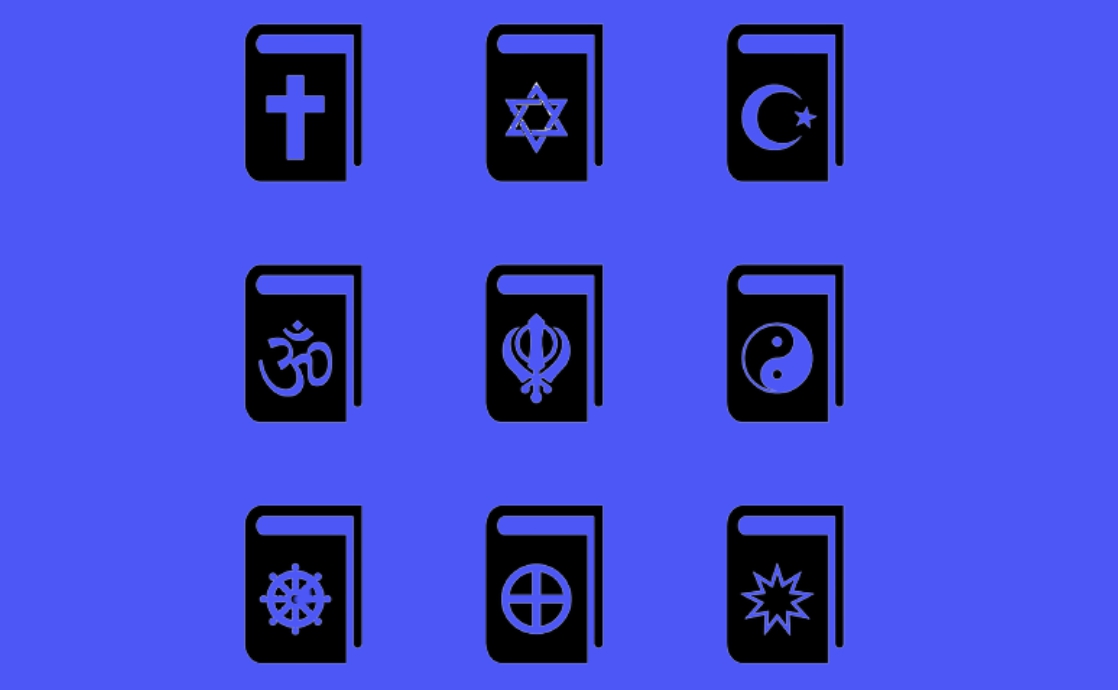The views expressed in our content reflect individual perspectives and do not represent the authoritative views of the Baha'i Faith.
Why do we view the prophets, messengers, and founders of the world’s religions as separate entities, rather than the return of the previous prophets? Why do we see their religions as separate, as well?
The Baha’i teachings offer a profound and beautiful response, as Abdu’l-Baha explained in his book Some Answered Questions:
In this material world, time has changing cycles and place is subject to varying conditions. Seasons follow one another and individuals progress, regress, and develop. …
The spiritual cycles associated with the Prophets of God proceed in like manner. That is, the day of the advent of the Holy Manifestations is the spiritual springtime. It is divine splendour and heavenly grace; it is the wafting of the breeze of life and the dawning of the Sun of Truth. …
That soul-stirring springtime then gives rise to the fruitful summer. The Word of God is proclaimed, His Law is promulgated, and all things reach a state of perfection. The heavenly table is spread, the breezes of holiness perfume the East and the West, the teachings of God conquer the whole earth, souls are educated …
When that Sun reaches its zenith it begins to decline, and that summer season of the spirit is followed by autumn. Growth and development are arrested; soft breezes turn into blighting winds; and the season of dearth and want dissipates the vitality and beauty of the gardens, the fields, and the bowers. That is, spiritual attractions vanish, divine qualities decay, the radiance of the hearts is dimmed, the spirituality of the souls is dulled, virtues become vices, and sanctity and purity are no more. …
Winter arrives – that is, the chill of ignorance and unawareness envelops the world, and the darkness of wayward and selfish desires prevails. …
When, however, the winter season has run its course, the spiritual springtime returns again and a new cycle reveals its splendour. … All the signs and bestowals of the former springtime, and perhaps even greater ones, reappear in this new season.
RELATED: How the Prophets of All Faiths Are Connected
We could explore volumes upon volumes analyzing the succession of religions and the historical conflicts among them, but ultimately we would be forced to choose from among at least four possible conclusions regarding the divine, sequential, and progressive plan of the Creator to bring about the spiritualization of planet Earth:
1. The first possibility is that the theory of progressive revelation – the continuing influence of God’s spiritual messengers on history – is wrong. In effect, that possibility surmises that there is no systematic plan of a Creator to assist us. It holds that all those who have claimed the position of teaching us on behalf of God are lying or delusional, and that all their followers are deceived.
2. A second possibility is that the system devised by the Creator to educate us is not working terribly well because humankind simply cannot or will not change – that’s just human nature!, the explanation goes. We are just obstinate, incorrigible, and unteachable.
3. A third alternative is that the system is working exactly as it should, given our free will and the time it takes for us to achieve sufficient collective understanding to become united in our appreciation of our nature, our purpose, and the necessity of our obedience to the guidance of the manifestations to bring about global change.
4. Of course, at least one other possibility exists, a theory with currency among a great number of contemporary scholars – that metaphysical reality, together with the Deity that governs it, are fictional anthropomorphic creations we have devised to comfort ourselves in our pitiful attempt to make sense out of a meaningless reality that has no inherent purpose or justice of its own. In other words, we have created God from the vain images of our own imagination, rather than allowing God to describe Himself to us through the images created by His representatives on Earth.
If the concept of a God who sends successive teachers, emissaries, messengers, or prophets to assist us is a myth, it is a strangely persistent and consistent one. In this continuing series of essays we have already noted the similar stages of religious belief among the world’s tribal cultures, however remote in time and geography they may be from one another. Similarly, we have noted that in some of the ancient Dharmic religions we find a list of successive avatars that parallels the list of prophets we find in the Pentateuch (or Torah), as well as lists of apostles in various surih of the Qur’an, and of manifestations cited in the Baha’i texts. Let’s look at the Biblical prophets as a first step in understanding how they are related to one another.
Biblical Allusions
Those prophets most familiar to a Western audience from the Old Testament are Noah, Abraham, and Moses, though there are a number of other figures considered by Judaism and Christianity to be minor prophets. Among these in the Jewish tradition are Isaiah, Jeremiah, Ezekiel, and Daniel, and, to a lesser extent Hosea, Joel, Amos, Obadiah, Jonah, Micah, Nahum, Habakkuk, Zephaniah, Haggai, Zechariah, and Malachi.
Christ often alluded to the prophets of the past, but more importantly, almost every statement of Christ contains allusions to passages and teachings from these figures, something any decent edition of the Bible will explain in footnotes. What is also clear is that Christ’s audience usually does not recognize these allusions to their own scripture. The most salient example of this tactic is Christ’s allusion in Mathew 27 to Psalm 22 as he is dying on the cross: “And about the ninth hour Jesus cried with a loud voice, saying, ‘Eli, Eli, lama sabachthani?’ that is to say, ‘My God, my God, why hast thou forsaken me?’”
RELATED: Literal or Not? Understanding Prophecies About Christ’s Return
While those who hear him are bewildered, their own Psalms of David both prophesize this event and explain how this event fits into the divine plan of God:
My God, my God, why hast thou forsaken me? why art thou so far from helping me, and from the words of my roaring? O my God, I cry in the day time, but thou hearest not; and in the night season, and am not silent. But thou art holy, O thou that inhabitest the praises of Israel. Our fathers trusted in thee: they trusted, and thou didst deliver them. They cried unto thee, and were delivered: they trusted in thee, and were not confounded. But I am a worm, and no man; a reproach of men, and despised of the people. All they that see me laugh me to scorn: they shoot out the lip, they shake the head, saying, “He trusted on the LORD that he would deliver him: let him deliver him, seeing he delighted in him.”
Likewise Christ sometimes explicitly compared himself and his advent to that of Abraham or Moses. We have no record of him cataloging the sequence of prophets who preceded him, but he does make several significant comments about the fate of the prophets sent by God to guide humanity. Perhaps the most memorable of these is his lengthy diatribe recorded in Mathew 23 against the learned scribes and Pharisees:
Ye serpents, ye generation of vipers, how can ye escape the damnation of hell? Wherefore, behold, I send unto you prophets, and wise men, and scribes: and some of them ye shall kill and crucify; and some of them shall ye scourge in your synagogues, and persecute them from city to city: That upon you may come all the righteous blood shed upon the earth, from the blood of righteous Abel unto the blood of Zacharias son of Barachias, whom ye slew between the temple and the altar.
Verily I say unto you, All these things shall come upon this generation. O Jerusalem, Jerusalem, thou that killest the prophets, and stonest them which are sent unto thee, how often would I have gathered thy children together, even as a hen gathereth her chickens under her wings, and ye would not! Behold, your house is left unto you desolate. For I say unto you, Ye shall not see me henceforth, till ye shall say, Blessed is he that cometh in the name of the Lord.
















Comments
Sign in or create an account
Continue with Googleor